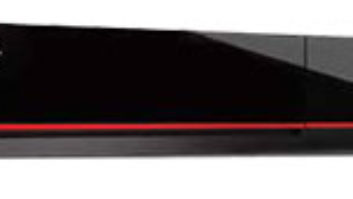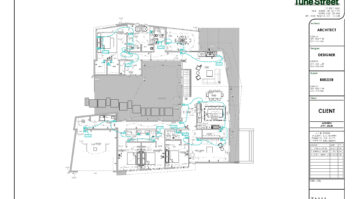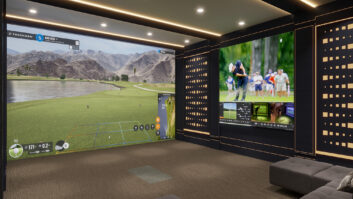Keeping ahead of commoditized disruption in multi-room audio

Systems like Autonomic’s Mirage music players emphasize quality above all else, and are only available through qualified integrators. Competition is great, especially for the tech industry. Without the perpetual thirst to one-up competitors with better designs, innovation would stagnate. Apple needs a Samsung; the Yankees need the Red Sox. But sometimes, the playing field isn’t so even. When competition starts to seep into the industry from new, less-proven sources, the resulting disruption can inspire more frustration than motivation.
Such has been the case for the category of multi-room audio, which according to CEDIA’s latest market research report, has remained a steady second to home theater as the most installed home technology for custom integrators. But, like other facets of the industry, multi-room audio is facing increasing interference from new players: service providers like Comcast and AT&T, and DIY facilitators like Best Buy and Lowes.
But not all manufacturers see this as a problem. In fact, brands like TiO (admittedly a comparative newcomer itself) have embraced the heightened interest in multi-room audio solutions. “The relatively recent introduction of do-it-yourself wireless audio players with multi-room capabilities has not dampened the market, but increased overall awareness of the category,” said TiO president Mike Anderson.

The Crestron Pyng system has been recently enhanced with the addition of native audio. The company’s AZSS1 StealthStream 1 audio streamer is priced in line with retail DIY products, but with enhanced versatility. “Essentially, TiO provides products that can compete on features and price in head-to-head comparisons, but adds the element of full automation from a single user interface–and a way for dealers to return to profitability,” Anderson said.
Streaming music is a big focus for lower end multi-room audio systems providers, and custom brands have been making sure to update these sources in their systems. “Our research showed that a large majority of multi-room audio jobs include at least one zone of video or TV, and almost everyone wants access to at least one streaming source or to their iTunes,” said Bill Hensley, Core Brands director of marketing communications. “We’ve leveraged our ELAN control platform to create solutions that are both easy for customers to enjoy and simple for installers to configure.”
The company’s new SpeakerCraft MRA-664 and Niles MRC-6430 are versatile systems that are easy to set up, according to Hensley. “The wizard-based configurators are a real advance for installers–a system can be configured literally in minutes,” he said.

A living room with Crestron multi-room audio products. Control4 also has accommodated streaming technologies, but goes a step further with interoperability. “When we say we work with over 8,000 devices, it really speaks to our approach to staying current and working with the latest and greatest equipment,” said Blair Sonnen, public relations manager at Control4. “We have drivers for the most popular music distribution equipment, and we can integrate with a variety of the most popular music streaming services like Spotify and Pandora.” But Control4 also provides the power to handle audiophile systems, so the system has plenty of options for the diversity of users that might operate a given system.
For manufacturers like RTI, multi-room audio is just one part of a total home package. “There is no reason to be limited to a system designed only for music–with RTI, so much more is possible,” said Scott Kelley, VP of sales and marketing. “While the RTI multi-room audio solutions perform as the backbone of the audio system, the RTI control platform offers the ability to have two-way control of popular mass-market and CI-focused music systems in addition to lighting, security, HVAC, and more.”
RTI’s audio distribution systems, like the AD-4x and AD-8x, can power audio in up to 64 zones, allowing them to reach far beyond the capability of wireless systems.
URC also has a similar philosophy: audio is just a gateway into more sophisticated systems. “Nowadays, we find that customers are not satisfied with just multi-room music; they want whole-house control of everything that goes with it,” said Cat Toomey, director of marketing at URC. “Moody music is great, but can appeal to more senses if you add mood lighting to the mix.”

The RTI AD-8x audio distribution system can power audio in up to 64 zones, allowing it to reach far beyond the capability of wireless systems. In terms of the music itself, URC provides many options. Its Total Control system offers several distinct advantages, including the ability of its DMS series amplifiers to stream audio to each other. “That means you can connect the turntable you keep in the rec room to a DMS-100 and stream the music to the DMS-1200 that, in turn, distributes the audio to up to 32 zones.”
Like RTI and URC, Savant recognizes multi-room audio as a baseline of the home control experience. With an elegant app, users can play music though multiple rooms, like mass-market options; but the possibilities for customization run much deeper. Tim McInerney, Savant’s director of product marketing explains it like this: “With a Savant Home, the homeowner can be playing music in [some] rooms, have the kids occupied watching TV in the family room, set the lights just right on the porch, start heating the hot tub for an after-dinner dip, and use the Scene Capture feature to save the great moment and replay it with just one button press another night when cooking dinner.”
CasaTunes is a company that has thrived on the increased popularity of multi-room audio and has aimed to stay abreast of upcoming trends. The company was the first to offer iOS and Android control of its systems, as well as the ability to integrate AirPlay streams through the system. In terms of competition with commoditized solutions, it also claims an advantage, according to David Krinker, CEO. “While our centralized solution tends to be more expensive than mass-market distributed solutions for smaller installations, our solutions are cost effective for larger installations, with four or more rooms, over mass-market distributed solutions,” he said.

The TiO StealthStream system is priced in line with retail DIY products, but with enhanced versatility. For other manufacturers like Autonomic, their advantages lie firmly in quality, with a focus on high-resolution audio. “Mirage music players offer all of the popular streaming services including lossless options such as TIDAL and Murfie and are compatible with the latest high-resolution digital music formats,” said Autonomic CEO Michael de Nigris. This focus, along with the fact that the brand’s products are only available through qualified integrators, keeps Autonomic positioned as a top-tier solution for multi-room audio.
Similarly, Crestron does not concern itself too much with mass-market solutions. According to Delia Hansen, senior manager of residential marketing, “Crestron continues to develop products designed to be best-in-class, understanding that we will be the high-end choice, selected by those who desire the best.” To try to maintain its top-notch status, the brand has been enhancing its Pyng system, recently adding native audio to the popular system.
“Pyng makes it almost as easy to add a wired audio solution as many commoditized systems have made adding a wireless solution,” Hansen said.
For Sonos, continued success is as easy as leaning on its trailblazing reputation and wide market reach. “Sonos gives our dealers ecstatic, lifelong customers,” said Kostas Reissis, director of sales, U.S. AV and specialty. “Customers who fervently love their music experience and tell everyone they know how much better a Sonos music-filled home is.”
So, like many other spheres of the market that have been cut into by mass-market alternatives, maintaining relevance is a matter of adaptations. Consumers who want the best home audio solution will almost always turn to an integrator; now, it’s important for integrators to deliver systems that can handle all kinds of demands, including the most basic.
Matt Pruznick ([email protected]) is the associate editor of Residential Systems and Systems Contractor News.







